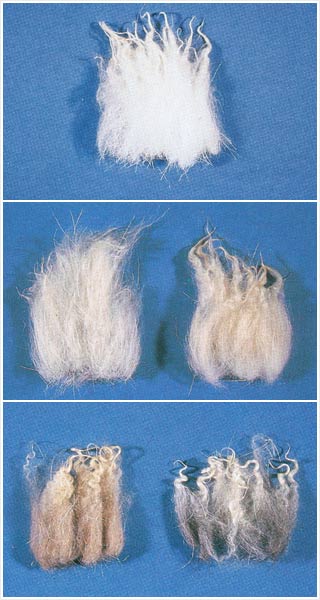How is cashmere Fibre Created and Why Is It So Sought After?
How is cashmere Fibre Created and Why Is It So Sought After?
Blog Article
Discovering the Different Types of Cashmere a Natural Fiber for Ultimate Deluxe
Cashmere, a natural fiber, is frequently connected with high-end and comfort. Not all cashmere is developed equal. From the highly soft Mongolian range to the lightweight heat of Indian Pashmina, each kind presents its own unique functions and appeal. The much more affordable Chinese cashmere, the conventional Scottish variant, and the premium Italian mix, all tell a different tale of this remarkable fiber. As we untangle the globe of cashmere, a deeper understanding of its real value and class starts to emerge.
Comprehending the Extravagant Nature of Cashmere
Cashmere, often connected with high-end and convenience, holds an one-of-a-kind appeal on the planet of all-natural fibers. This soft, light-weight material is fancied for its phenomenal heat and amazing sturdiness. Unlike other all-natural fibers, cashmere combines insulation with breathability, providing unparalleled convenience across varying temperature levels. Its shiny coating and soft appearance add to its high-end appeal, justifying the costs cost that typically includes cashmere garments. Furthermore, cashmere's integral wrinkle resistance and flexibility enhance its worth, making it a preferred selection for costs clothes and accessories. Despite its fragile appearance, cashmere has a surprising durability, able to keep its form and extravagant feeling in time. This distinct blend of characteristics seals cashmere's setting as an icon of beauty and indulgence.
Just What Is Cashmere and Where Does It Originate from?

Given these outstanding top qualities, one may question about the beginning and make-up of this glamorous fiber. Cashmere is stemmed from the soft undercoat of cashmere goats, mostly discovered in Mongolia, China, Iran, and Afghanistan - is cashmere a natural fiber. These goats are adapted to rough climatic conditions, creating an exceptionally great, soft underfur as a defense against the bitter cold. This underfur, or undercoat, is what is harvested for cashmere. Each springtime, when the goats normally shed their winter season layer, farmers brush out the great underhair, leaving the coarser hair behind. This meticulous process adds to the shortage and high expense of cashmere. With its beginning in the harsh landscapes of Asia, cashmere is a testament to nature's capacity to generate deluxe from hardship.
Decoding the Different Sorts Of Cashmere
Recognizing the different kinds of cashmere is vital to valuing the top quality and distinct attributes of this glamorous textile. Generally, cashmere is categorized right into 3 kinds: raw, virgin, and recycled. Decoding these types is the first action in comprehending the view exclusivity and worth of cashmere.

The One-of-a-kind Characteristics of Each Kind Of Cashmere
Having discovered the different classifications of cashmere, it ends up being apparent that each kind flaunts its special collection of features. Mongolian cashmere, for instance, is renowned for its exceptional top quality, due to Mongolia's severe winters months that generate longer and finer fibers. Conversely, Chinese cashmere is frequently a lot more inexpensive, though its much shorter fibers can reduce sturdiness.
Why Cashmere Is the Embodiment of Deluxe in Fashion
Cashmere holds a well-regarded position in the world of style, concerned as an icon of luxury and sophistication (is cashmere a natural fiber). Cashmere is acquired from the great undercoat of Himalayan goats, understood for their superior quality fiber. Cashmere's unequaled comfort and longevity make it a sought-after product in the production of premium garments.
The Refine of Making Cashmere: From Goat to Garment
The journey of cashmere, from being an undercoat of a Himalayan goat to straight from the source a luxurious garment, is an elaborate one. With the development of spring, farmers in Mongolia and China gather the wool by brushing the goats, ensuring no damage is done. The acquired woollen contains crude outer hair and soft downy undercoat. This blend is after that fastidiously divided, with just the soft down used for cashmere. This raw cashmere is cleaned, colored and rotated into thread. The yarn is then woven or weaved into fabrics. The final action involves cleaning and pressing to provide the material its characteristic softness and heat. From goat to garment, each action is a testament to the skill, virtuosity and persistence involved in crafting cashmere.

Final Thought
Finally, cashmere, with its natural sophistication and unequaled convenience, rules supreme on the planet of deluxe fashion. The diversity in types, ranging from the soft Mongolian, light-weight Indian Pashmina, budget friendly Chinese, traditional Scottish, to the vivid Italian, reveals the flexibility of this natural fiber. The scrupulous process of transforming it from a goat to a garment further includes in its exclusivity, making cashmere the embodiment of refinement and high-end.
Cashmere, an all-natural fiber, is often linked with luxury and comfort (is cashmere a natural fiber).Cashmere, usually linked with deluxe and comfort, holds an one-of-a-kind appeal in the world of natural fibers. Unlike other all-natural fibers, cashmere combines insulation with breathability, providing unequaled comfort across varying temperature levels. Cashmere is derived from the soft undercoat of cashmere goats, mostly located in Mongolia, China, Iran, and Afghanistan. Cashmere is obtained from the fine undercoat of Himalayan goats, known for their exceptional cashmere top quality fiber
Report this page